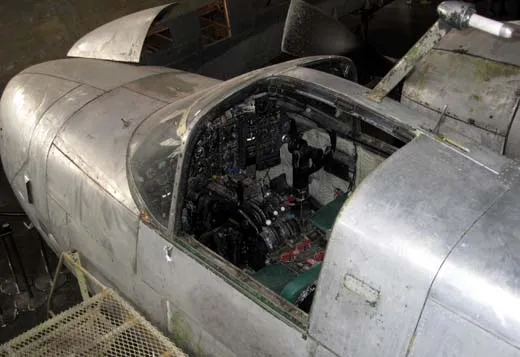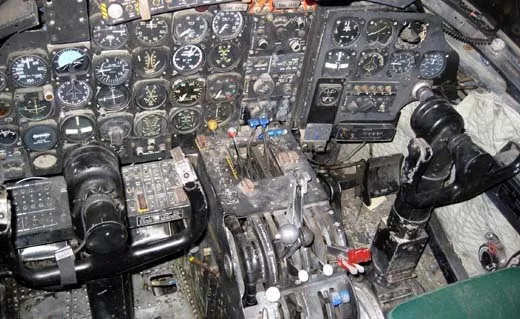Last of the Invaders
A reader tips us off to the restoration of a rare bird.
/https://tf-cmsv2-smithsonianmag-media.s3.amazonaws.com/filer/A-26A-flash.jpg)
It’s not often that readers suggest story ideas, but that’s what happened with our feature “Truck Killer,” about the Douglas A-26 Invader, the rugged airplane that served in World War II, Korea, and Vietnam.
Frank Nelson, of Lincoln, California, was paging through a back issue when he noticed our then-new “Legends of Vietnam” series. After reading the features about the McDonnell F-4 Phantom and the Republic F-105 Thunderchief, he thought the Invader—which he’d flown as a navigator in 185 missions with the 609th Air Commando Squadron in Vietnam—would make an important addition to the series.
Nelson wrote to editor-in-chief Linda Shiner presenting his idea. But he didn’t stop there. He invited author David Lande to the Air Commando reunion in Fort Walton Beach, Florida, and supplied photographs for the story (as did other former members of the 609th), and told us about the restoration of the very last flyable A-26.
The first time Nelson saw an A-26 was in 1966. “I was a navigator on a KC-135, stationed at Dyess Air Force Base in Abilene, Texas,” he recalls. “I went over to an airshow at Carswell Air Force Base in Fort Worth to see the XB-70 Valkyrie bomber. While I was there, I ran across an A-26 on display. I’d always been an airplane buff, so I knew the airplane had served in World War II and Korea, but I didn’t realize that they had been rebuilt for service in Southeast Asia. In fact, the last I had heard, they were all being abandoned because the wings were falling off.”
Nelson was so impressed with the A-26 that he volunteered for duty in Southeast Asia. One year later, the assignment came through. “It was really another world, as far as the navigator was concerned,” he remembers. “On the KC-135, you had a table with your charts, and I did a lot of work with celestial navigation. In the A-26, you’re sitting in the right [co-pilot’s] seat, and you don’t have the traditional navigation tools that you’d have in a transport-type airplane. At the time I thought, ‘Gee, how am I going to navigate?’ You just point the thing, that’s basically what we did.”
After his tour in Vietnam, Nelson switched to a C-130 unit. “By the time I got through with my tour, I could see the A-26 wasn’t going to be around much longer; we had already lost a fair number of airplanes,” he recalls. He finished his career in the F-111. “It was like being back in the A-26,” he says. “It was a lot faster, of course.”
The A-26 is still part of Nelson’s life. He’s avidly following the efforts of Pacific Prowler (an aircraft restoration group) and the A-26 Legacy Foundation (an organization founded by the children of the members of the 609th) to restore the last flyable A-26A.
In 1964, On Mark Engineering rebuilt 40 Invaders for the U.S. Air Force, incuding one nicknamed Special K, the last off the production line. In late 2009, Pacific Prowler bought Special K from a family in Billings, Montana, and flew the airplane to their headquarters at Meacham Airport in Fort Worth, Texas. Just because the airplane is flyable, “it doesn’t mean there isn’t an awful lot of work to do,” cautions Scott Perdue, Pacific Prowler’s director of operations. “It’s barely airworthy. The restoration will be a tribute to Vietnam veterans,” he continues, “not just the folks that flew this particular airplane, but the folks who maintained it, and others that served in the Vietnam War.”
Pacific Prowler has been restoring aircraft for about seven years. Their flagship is a B-25; the team is also working on a DC-3 and a C-47. Perdue expects the A-26A restoration to take about 16 months; “It all depends on how much money we can raise,” he says. They’ve already stripped the paint and are replacing the Plexiglas windows, which were hazed and brittle after 40 years.
Franklin Poole, of Pacific/Gulf Coast Productions, is documenting the restoration process. (Click here to see video of the aircraft and interviews with former A-26 crewmembers.) But when he met a former A-26 pilot and co-pilot, he decided to change the focus of the documentary “from being a story about the airplane restoration to a story about the airplane and the men that flew her.” Poole interviews the crews as they sit in the aircraft; the airplane, he says, acts “like a time machine.”
If all goes well, Special K will make an appearance at the 609th Air Commando reunion in 2011. You can bet that Frank Nelson will be there to see it fly in. “I guess you could call the A-26 my favorite,” he says. “I think anybody who does a combat tour in a certain airplane, it stands out.”

